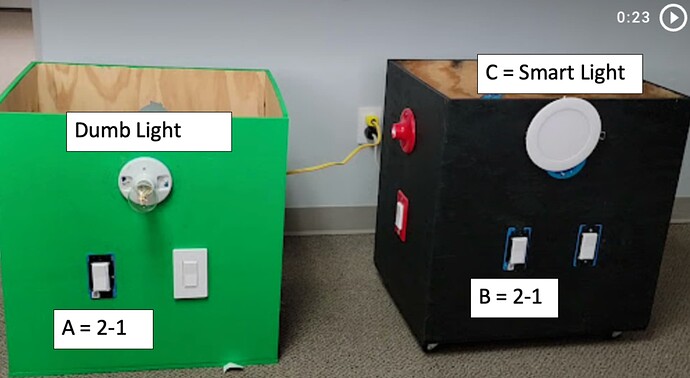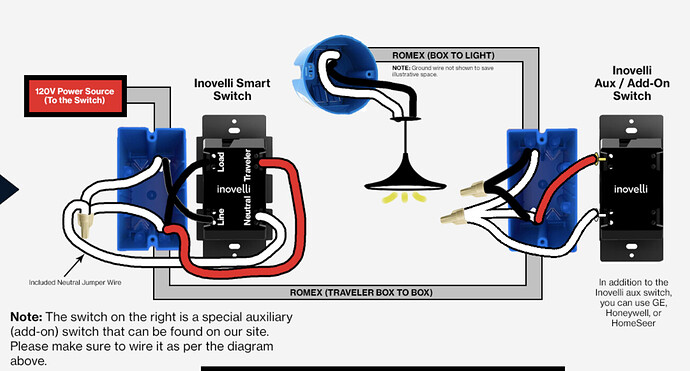@EricM_Inovelli and I doing some last minute verification/tests on bindings and I’m sure he’ll share his results on switch to switch, but I wanted to share this (raw – excuse my shaky camerawork and poor commentary) with everyone to show the power and versatility of Zigbee binding and some of the crazy tests we do to try to think of all scenarios.
In this example, we wanted to test binding two switches together on separate circuits, one circuit controlling a, “dumb” bulb and the other one controlling a smart bulb.
The left box is a non-neutral setup with the wiring looking like this:
The right box is a neutral setup with the wiring looking like this:
The non-neutral has the following setup:
- Inovelli 2-1 (Switch A)
- Inovelli Aux Switch
- Dumb Light
The neutral has the following setup:
- Inovelli 2-1 (Switch B)
- Inovelli Aux Switch
- Juno Zigbee Light (Light C)
NOTE: Switch B is in Smart Bulb Mode
You can see that everything syncs properly, which is awesome!
DISCLAIMER: The 500ms delay is enabled, I forgot to disable it, so the speed may be a little slower than normal, but it’s still crazy fast and versatile.
–
So how is this used in real life? It’s probably pretty rare to mix/match a dumb and smart bulb circuit, but I had a similar setup at my old house in the basement.
There was a light at the top of the stairs and then I would have to walk to the bottom of the stairs to turn on the rest of the basement lights. This was annoying bc there wasn’t a ton of light before getting to the second light switch.
At the top of the stairs, I had a smart switch connected to a dumb bulb and had smart switches throughout the rest of the basement. However, I also had Hue lights down there for ambiance.
Now, if only the Blue Series was launched back then – I could have all basement lights turn on (including the Hue lights) and then could use scene control (multi-taps) to change the colors.
![]()






